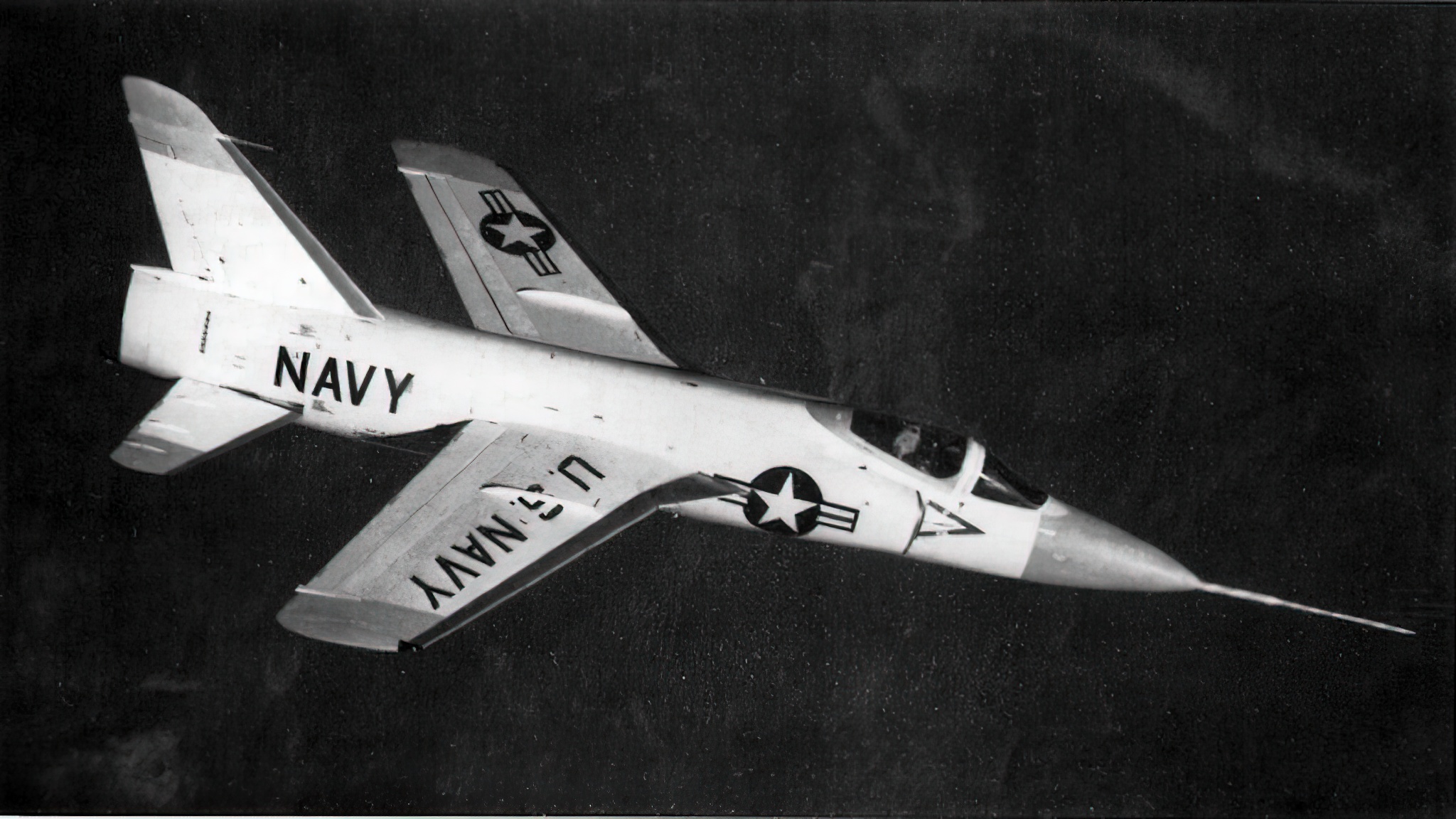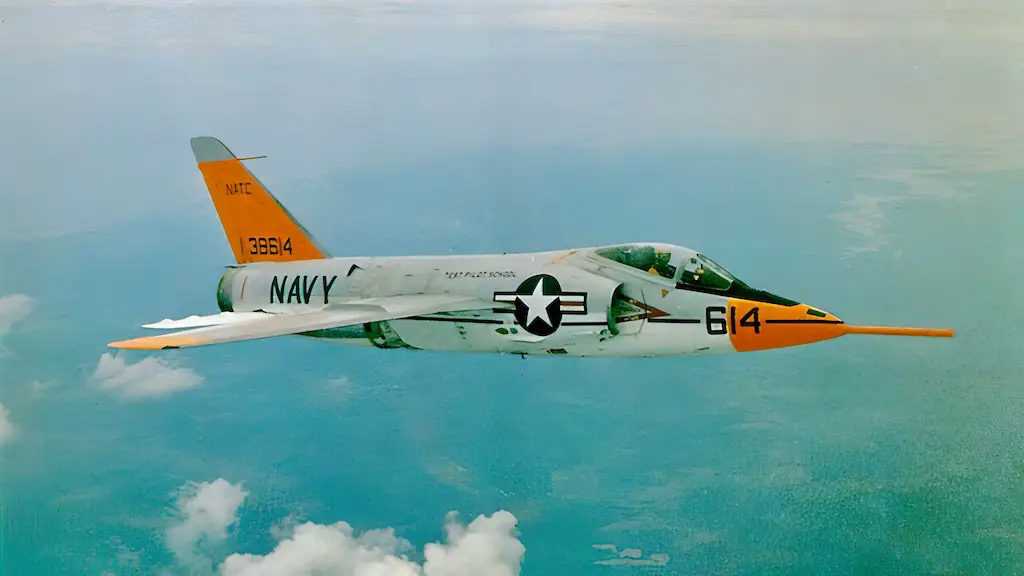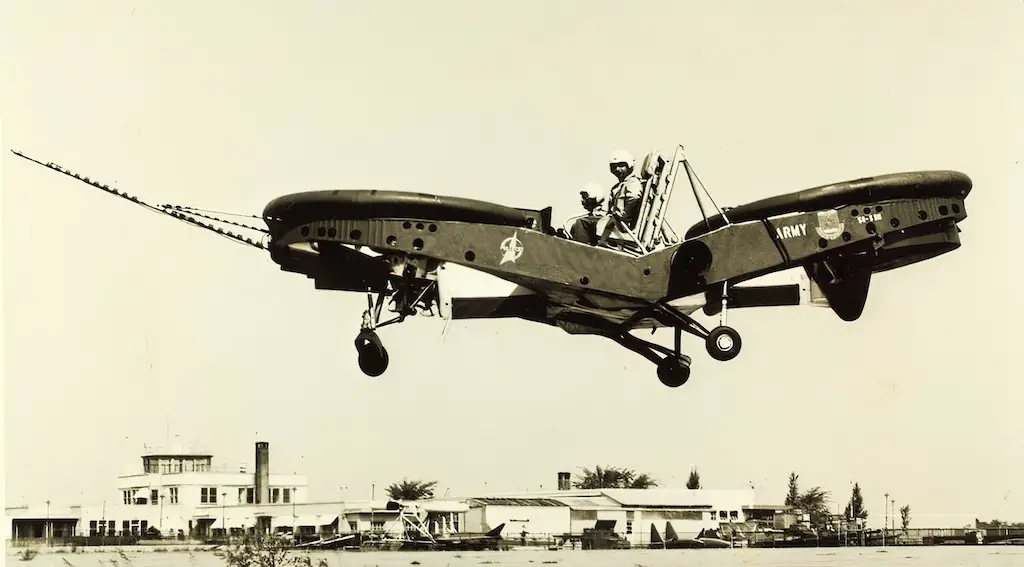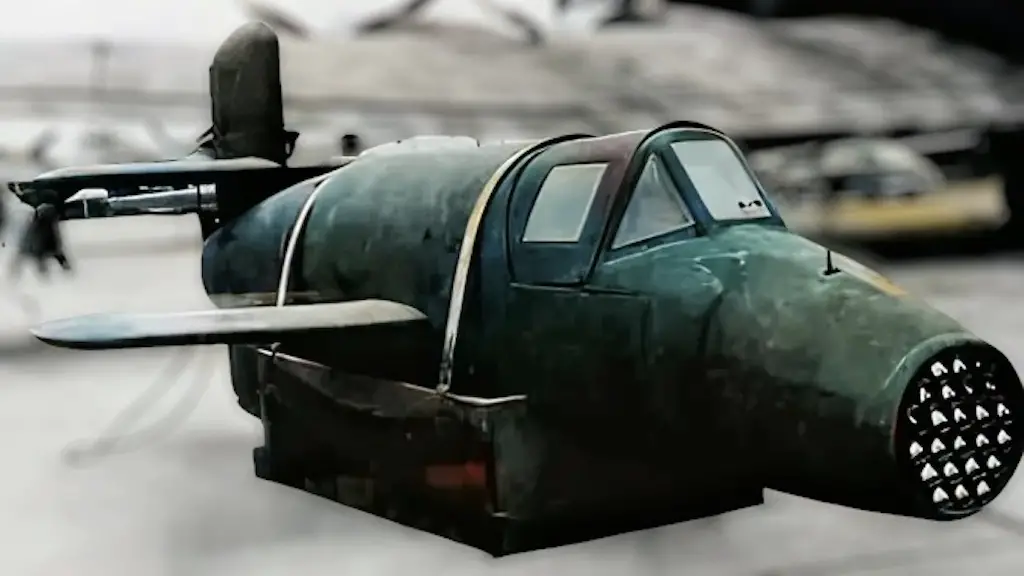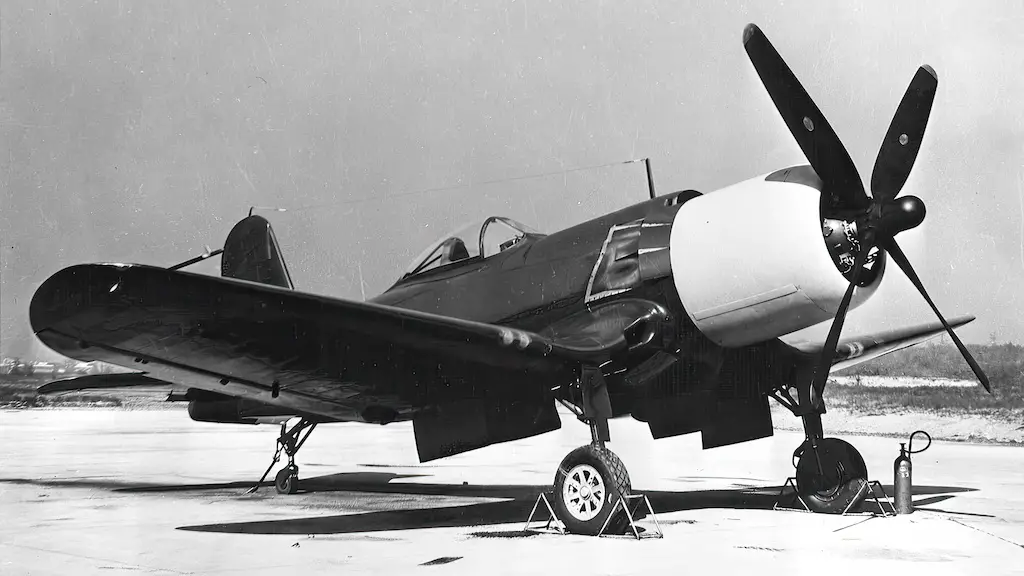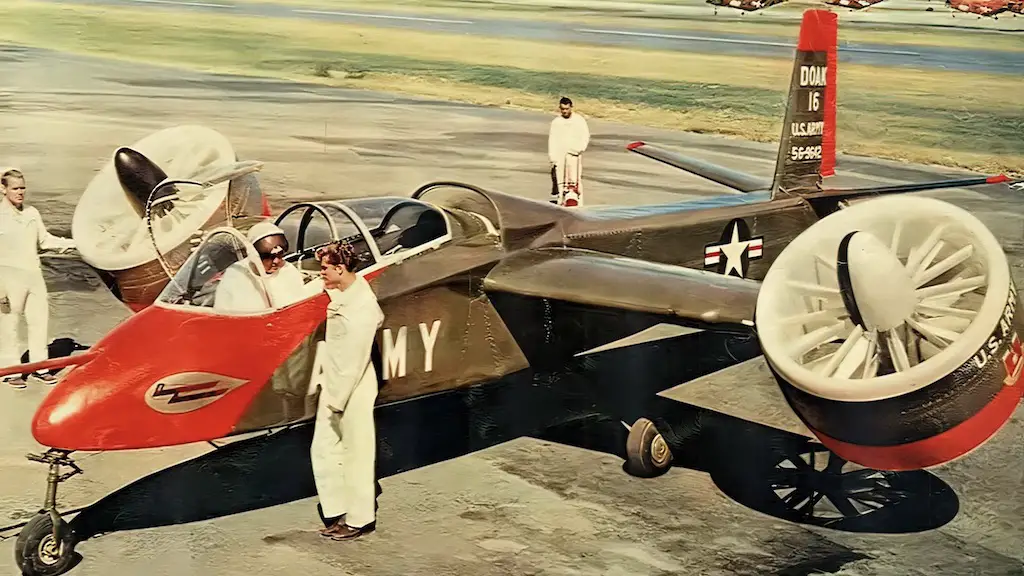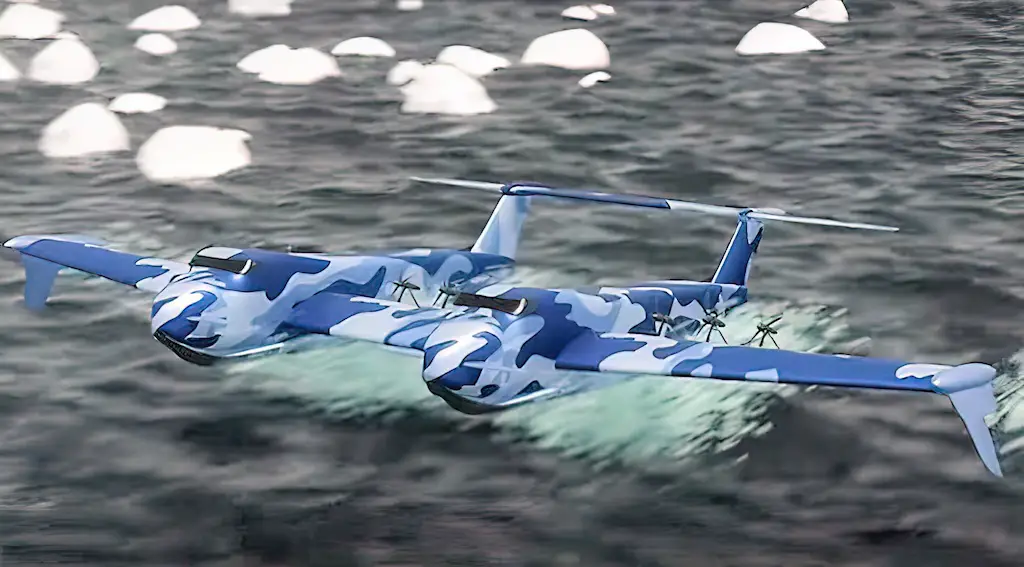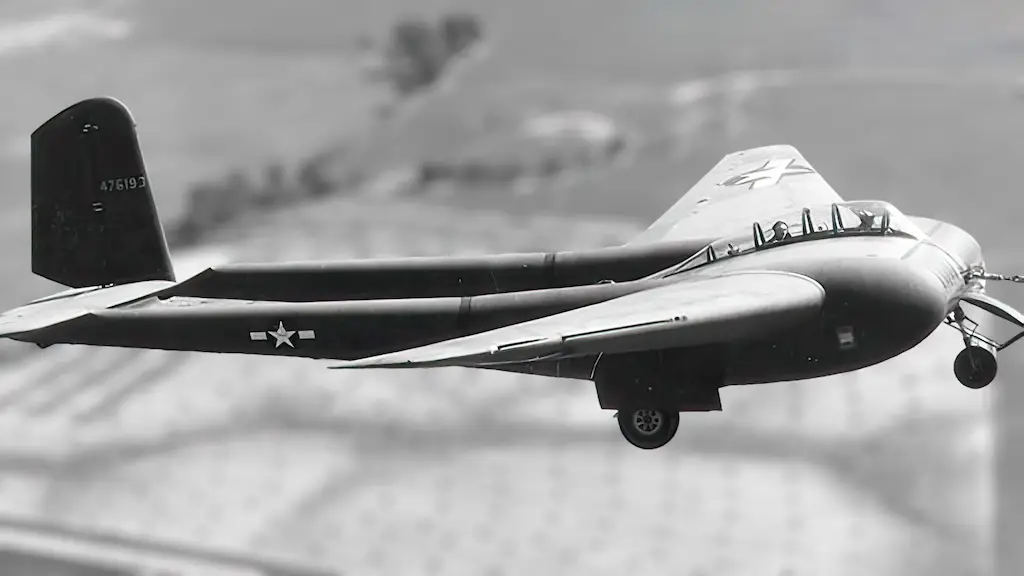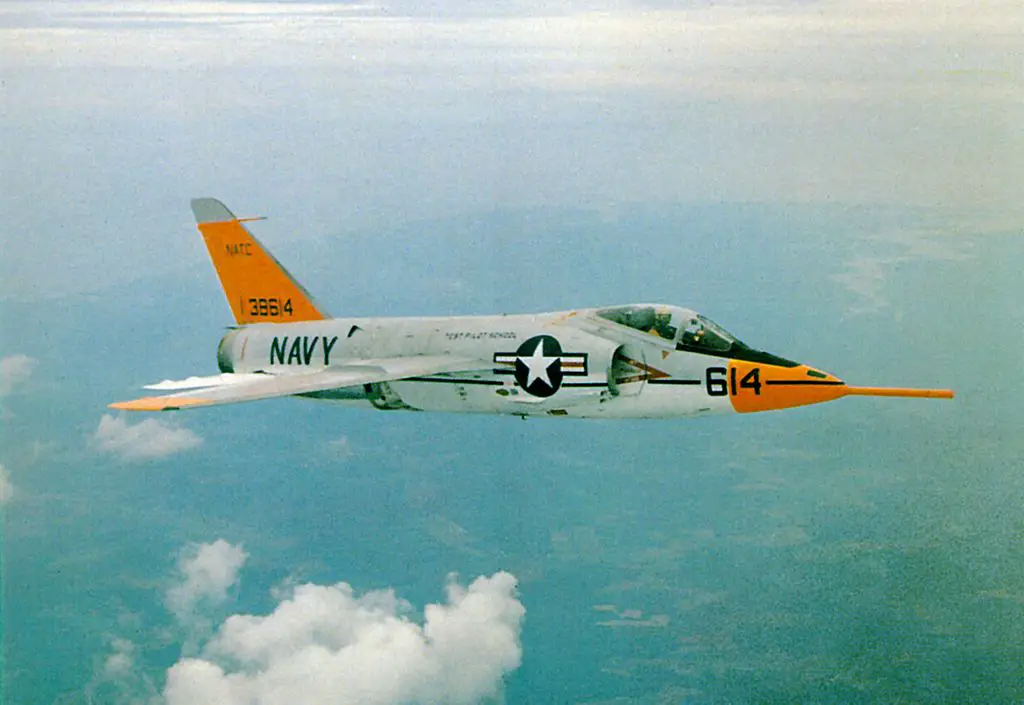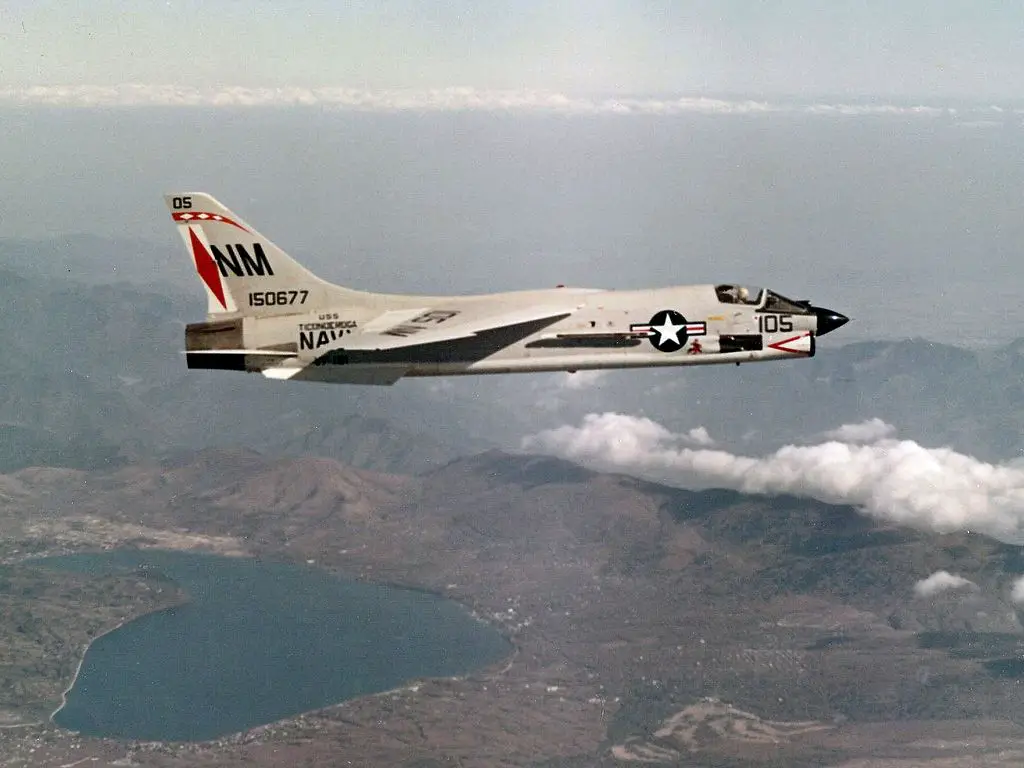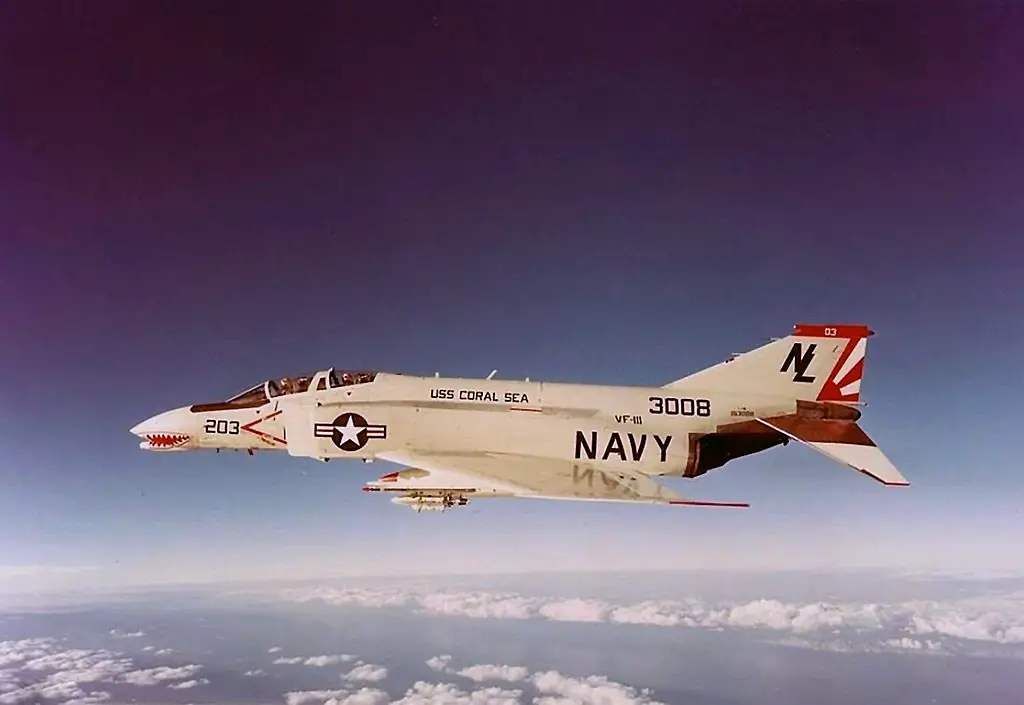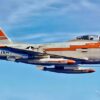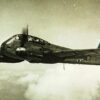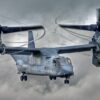Frontline service
The Grumman F-11 Tiger was the U.S. Navy’s second supersonic aircraft and proved to be a perfectly capable aircraft. The Tiger only saw frontline service for four years before it was reallocated to Advanced Training Command, however, some spent some time with the USN Blue Angels. It holds the satirical title of being the first jet aircraft to shoot itself down. To add insult to injury, it never shot anything down but itself.
The F-11 started out in 1952 as a simple upgrade and modernisation of Grumman’s existing F-9 Cougar carrier-based fighter. However, at this point in time jet aircraft were still relatively young and were developing at a lightning-fast pace, so by the time this aircraft was ready to fly it was almost an entirely new design. By the time the design came out, a better one was being built and taking the assembly line.
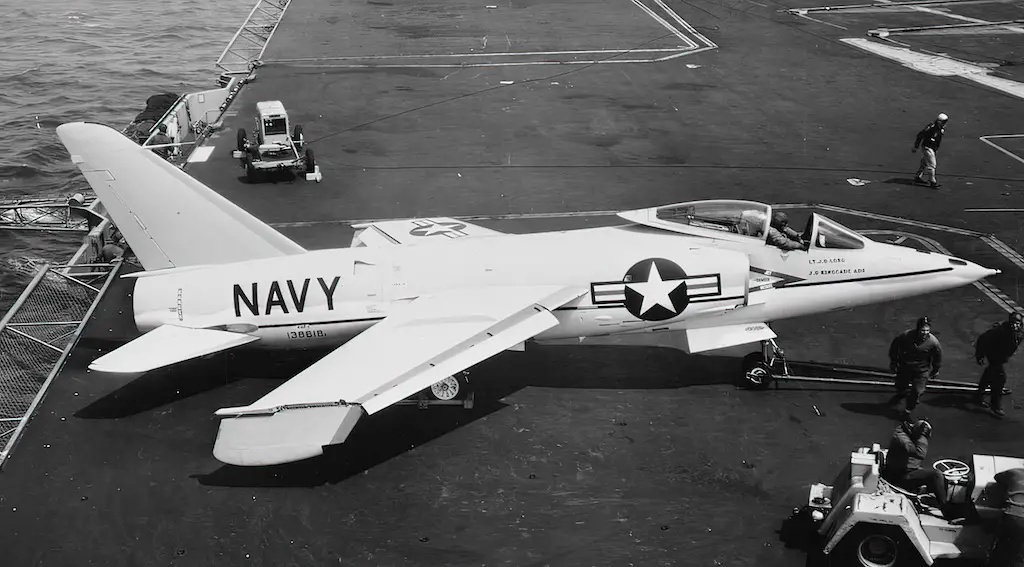
The F-11 Tiger
An exceptional aircraft capable of Mach 1.1, due to its lightweight feature and Wright J65-W-16A turbojet engines, the F11F Tiger was the superior performing fighter of its time. In April 1958, an F11F-1F Super Tiger, of which only two were built, established a world record by reaching an unprecedented altitude of 76,828 feet.
The Tiger was the final development of the preceding F9F design and concluded a quarter century of ‘cat’ family Grumman fighter production that had begun with the XFF-1 biplane of 1931. It was originally designated as the G-98 in 1953, then as the F9F-9, and finally as the F-11F.
After completion of short-snout 42 F-11Fs on the first contract, Grumman built 157 on a second order, these having a longer nose with provision for radar which in practice was never installed. Total production was completed in December 1958.
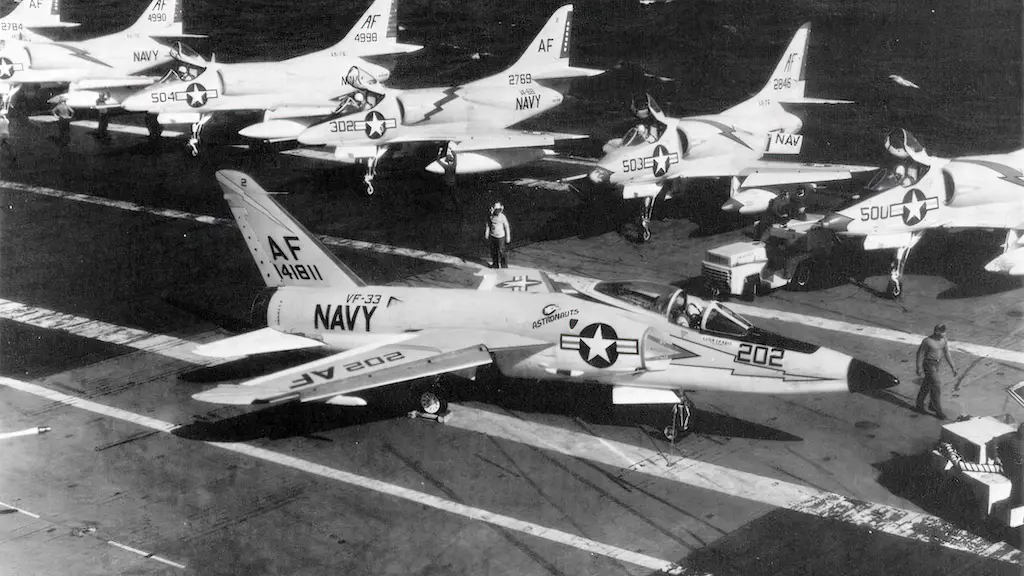
The F-11F Tiger was a single-pilot daytime fighter, armed with four fixed forward-firing 20mm guns; four underwing Sidewinder 1A 1C air-to-air missiles.
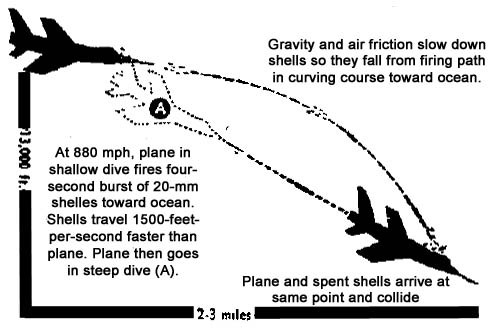
During testing in 1954, the prototype first flew with a non-afterburning engine, since the J65 engine had not been built yet. Even with this limitation, the Tiger very nearly broke the sound barrier on its first-ever flight. When the J65 was eventually integrated, the Tiger became the second Navy aircraft to break the speed of sound. The Tiger was soon after accepted into service within the U.S. Navy.
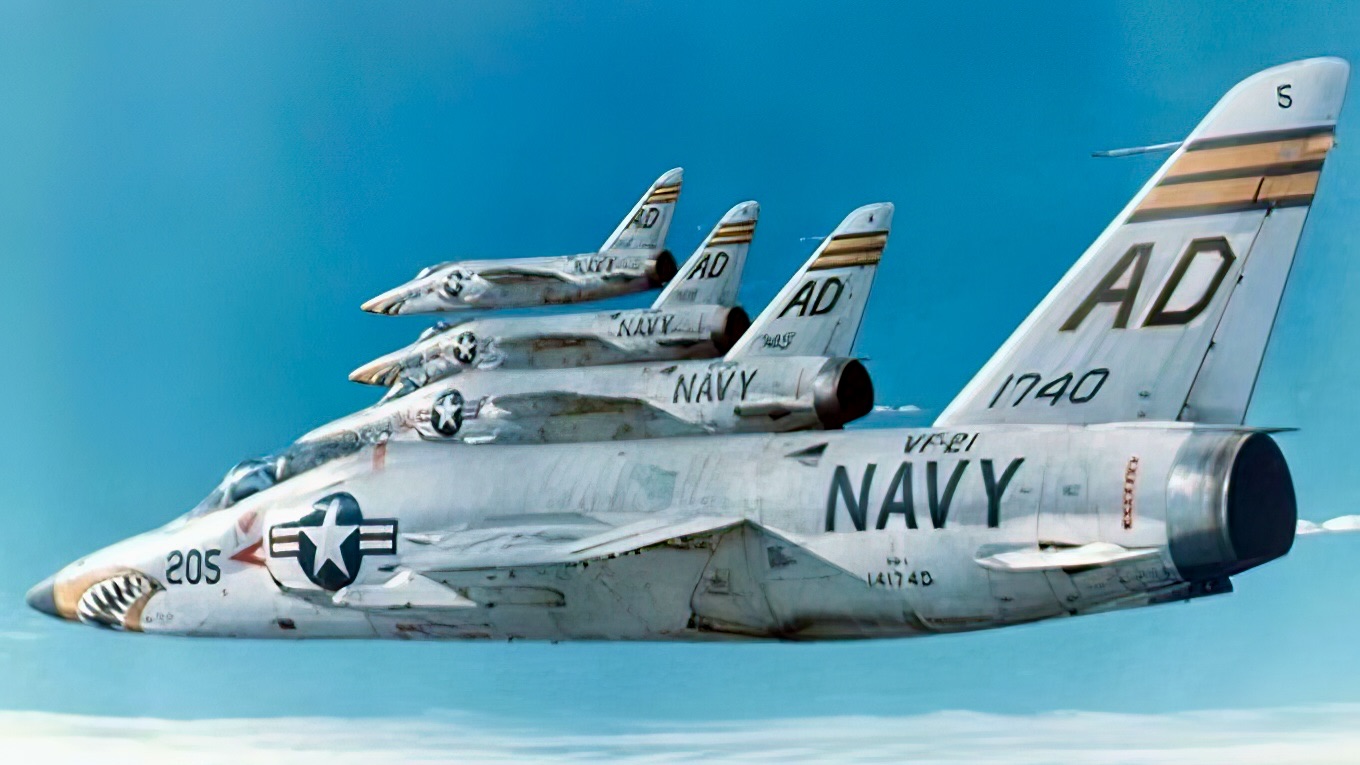
Mechanical Suicide
On September 21, 1956, U.S. Navy test pilot Tom Attridge took off in his F-11F Tiger from Long Island, New York for a weapons test mission over the Atlantic. He climbed to 20,000 feet, made a Mach 1 dive, and fired two bursts of rounds from his 20mm cannons until his ammunition was expended at 13,000 feet.
He continued his dive then slightly broke the descent at around 7,000 feet, at which point he felt something powerful hit his windshield. At first, he thought it might have been a bird, however, he would later discover the hard way that it was from his own fired rounds.
In fact, three of those rounds hit his Tiger. Within a mere 11 seconds of firing, the first 20mm bullet pierced his nose cone, the second went through his windshield, and the final one directly struck his right engine intake.
Attridge’s Tiger soon began to lose power and went down into a sea of trees approximately a mile shy of the runway, travelling 300 feet and catching fire. Fortunately, he survived but sustained serious injuries.
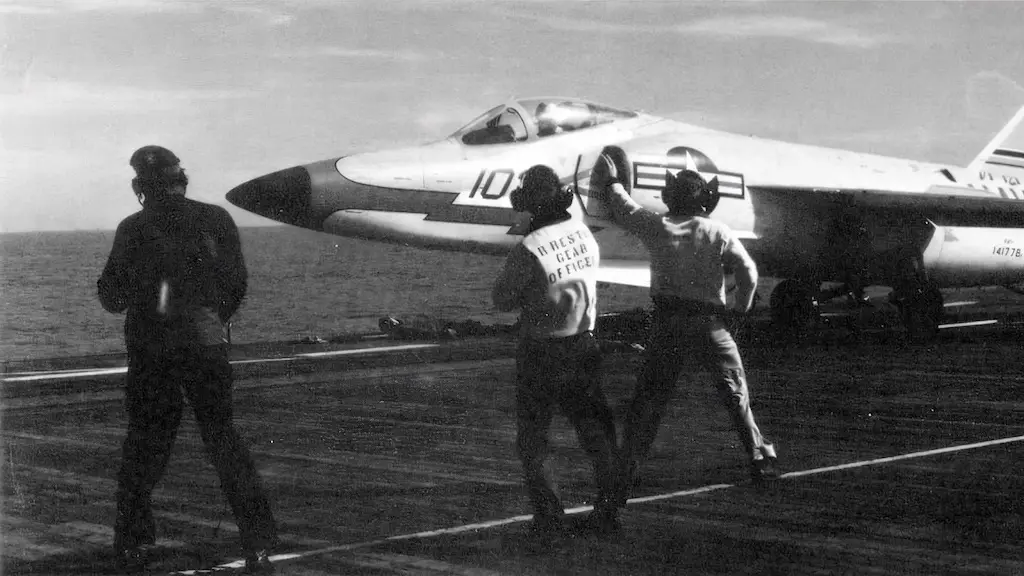
Early Retirement
When it entered service in 1956, the Tiger was immediately hampered by short-range and reliability issues, mostly related to its J65 engine. It served only under four years, with the Navy removing it from carrier duties in 1961 and cancelling orders. Only 199 were built.
The Vought F-8 Crusader did not help it out, as it outperformed the Tiger in almost every way. Despite being removed from frontline roles, the Tiger carried as a training aircraft. In addition, the Navy Blue Angels used the Tiger until 1968, at which point they replaced the Tiger with the F-4 Phantom.
Grumman attempted to salvage what it could by upgrading its F-11Fs performance shortcomings with an improved variant: the F11F-1F Super Tiger.
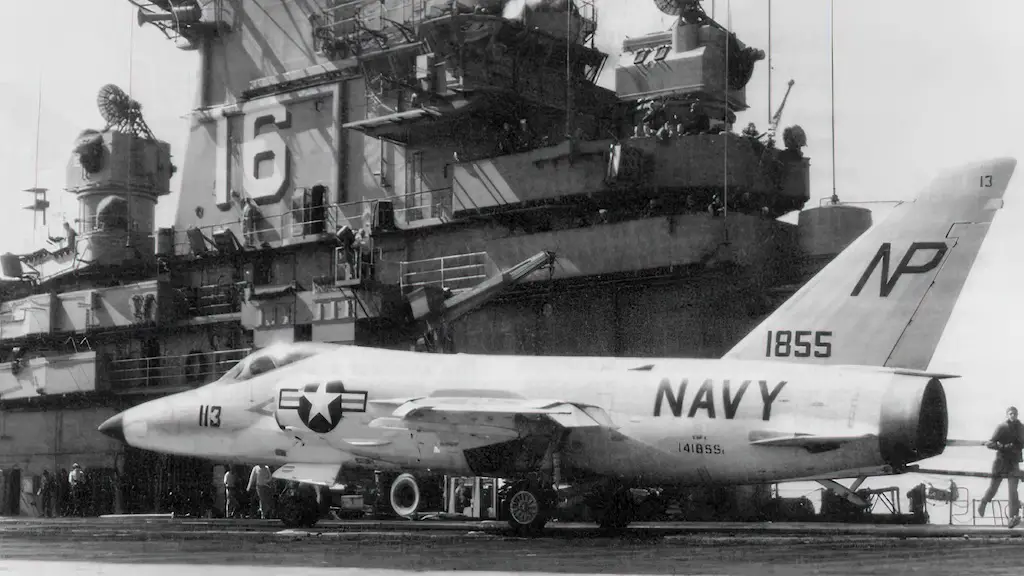
The F11F-1F Super Tiger
The F11F-1F Super Tiger was Grumman’s attempt at fitting the aircraft with the new (and immensely powerful) General Electric J-79 turbojet engine. This engine nearly doubled the thrust output of the J65 and was the engine of choice for the F-4 Phantom.
When Grumman put the engine in a modified F-11 airframe, it exceeded even their own expectations. On a 1957 test flight, a Super Tiger reached an incredible 1,400 mph at 40,000 ft, making it the first naval aircraft to reach Mach 2.
Although the aircraft was extremely capable, it was never ordered into production. Grumman’s efforts to sell the aircraft to the U.S. and to foreign markets fell short because of an alleged Lockheed bribery scandal.
